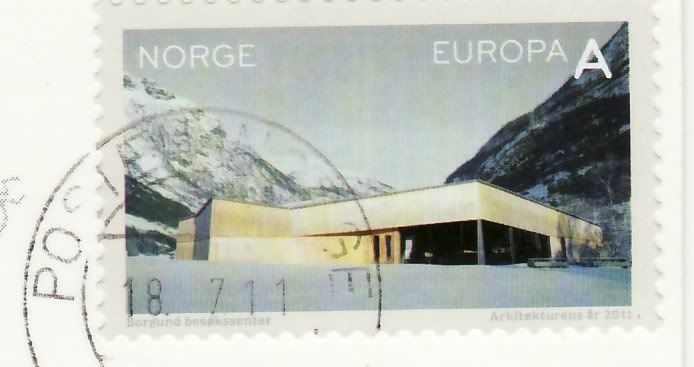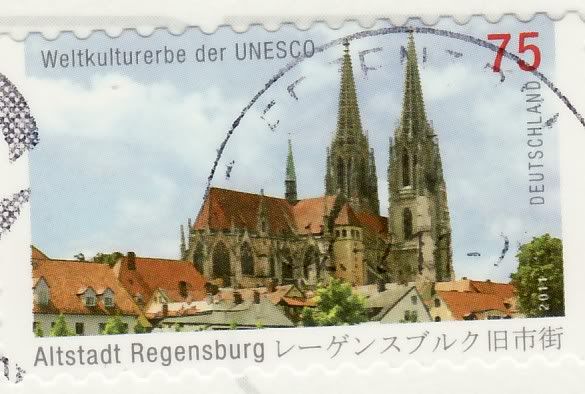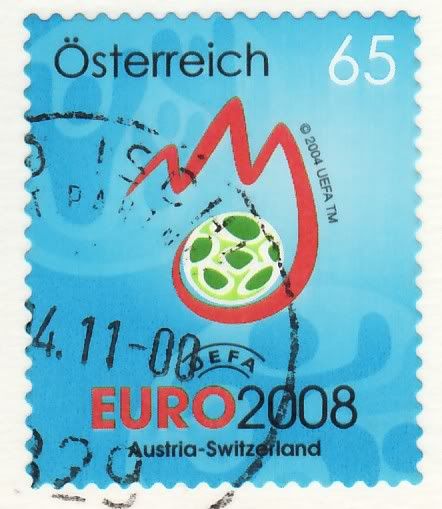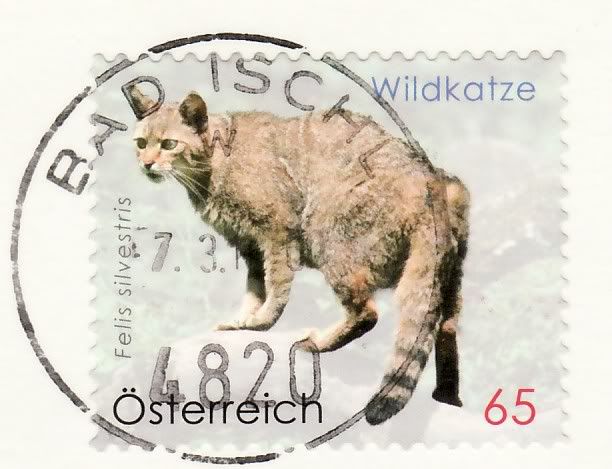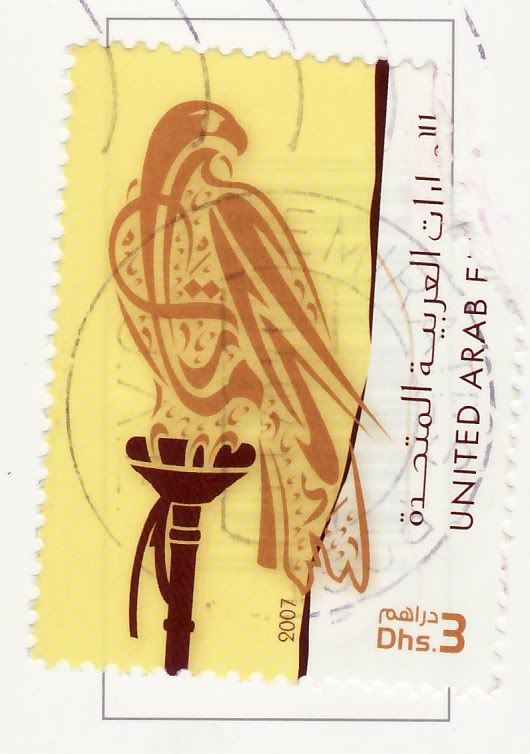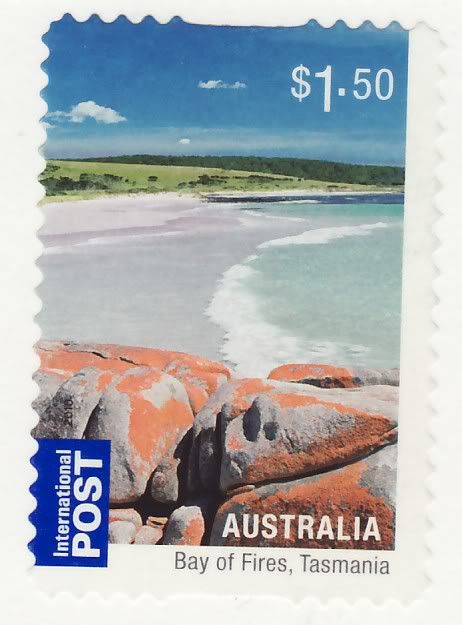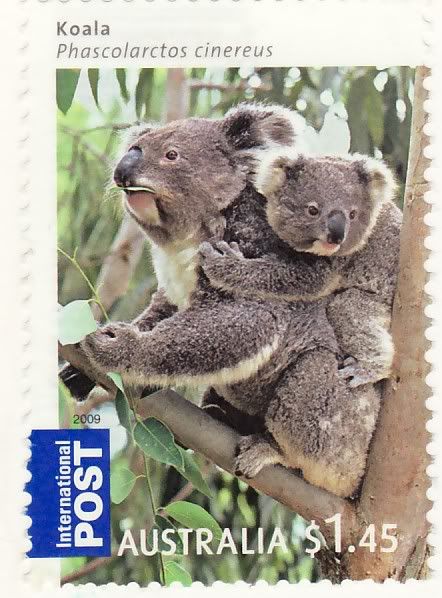Tourist Stamps (Year of Architecture 2011) A Europe
The Borgund Stave Church Visitors’ Centre was opened in 2005. It
houses a comprehensive exhibition of Norwegian stave churches
in general and of Borgund Stave Church in particular.
We can, for example, find copies of carvings and details from the
church.
Borgund Stave Church was first mentioned in written
sources in 1342, but growth rings show that the timber used to build the
church was felled in the winter 1180-81. The church
was probably built soon after that, i.e. before 1200. The stave church
was in regular use until 1858, when the new Borgund
Church beside it was completed. The stave church and the visitors’
center
are run by the Society for the Preservation of
Norwegian Ancient Monuments.
The stamp issue also marks the centenary of the National Association of Norwegian Architects. The Year of Architecture 2011 is Norway’s largest architectural event ever, a nationwide project with over 100 small and large events.
Visitors' Center Borgund Stave Church
NK: 1786
Date of issue: 15 April 2011
Values and subjects:
A-Priority Europe: Visitors’ Center Borgund Stave Church
Architect: Askim/Lantto Arkitekter AS
Photo: Jiri Havran
Design: Lars Håvard Dahlstrøm, Neue Design
Method of printing: Offset Printing house: Royal Joh. Enschedé, Netherlands.
Date of issue: 15 April 2011
Values and subjects:
A-Priority Europe: Visitors’ Center Borgund Stave Church
Architect: Askim/Lantto Arkitekter AS
Photo: Jiri Havran
Design: Lars Håvard Dahlstrøm, Neue Design
Method of printing: Offset Printing house: Royal Joh. Enschedé, Netherlands.
This year’s tourist stamps feature buildings with a special
architectural style. They range widely from the Borgund Stave
Church Visitors’ Centre to the world’s best insulated
freezer on Svalbard. The architect firms responsible for designing the
buildings (as listed below) are Barlindhaug Consulting,
Helen & Hard and Askim/Lantto.
The stamp issue also marks the centenary of the National Association of Norwegian Architects. The Year of Architecture 2011 is Norway’s largest architectural event ever, a nationwide project with over 100 small and large events.
